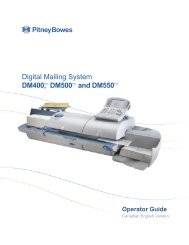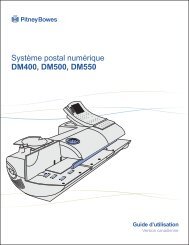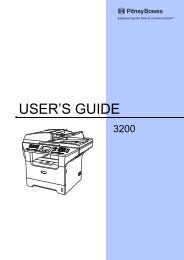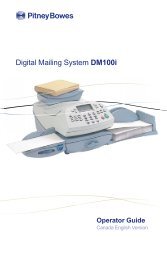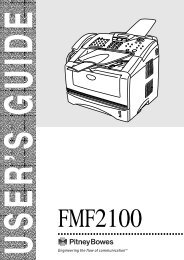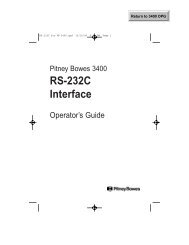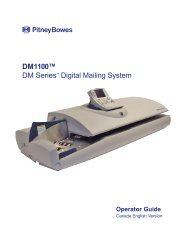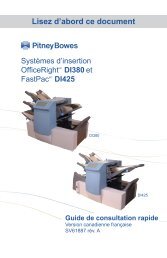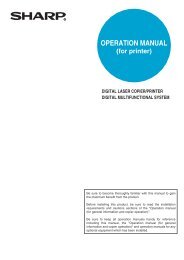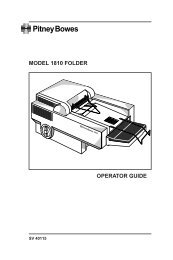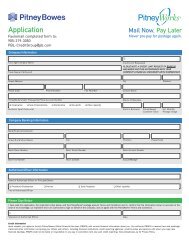AR-M237 AR-M277 - Pitney Bowes Canada
AR-M237 AR-M277 - Pitney Bowes Canada
AR-M237 AR-M277 - Pitney Bowes Canada
You also want an ePaper? Increase the reach of your titles
YUMPU automatically turns print PDFs into web optimized ePapers that Google loves.
84<br />
MATERIAL SAFETY DATA SHEET<br />
Data Revised: Jul. 31. 2002<br />
Data Issued: Apr. 2. 2001<br />
MSDS No. F-00981<br />
Exposure limit values<br />
OSHA-PEL (USA) : 15mg/m3 (Total Dust) , 5mg/m3 (Respirable Dust)<br />
ACGIH-TLV (USA) : 10mg/m3 (Total Dust) , 3mg/m3 Personal Protective Equipment<br />
(Respirable Dust)<br />
Respiratory Protection : Not required under intended use.<br />
Hand Protection : Not required under intended use.<br />
Eye Protection : Not required under intended use.<br />
Skin Protection : Not required under intended use.<br />
Other Protective Equipment : Use of a dust mask and goggles are recommended when handling a large<br />
quantity of toner or during long term exposure, as with any non-toxic dust.<br />
9. PHYSICAL AND CHEMICAL PROPERTIES<br />
Appearance<br />
Physical State:Solid Form: Powder Color:Black Odor:odorless<br />
Ph : Not applicable<br />
Boiling/Melting Point : Not applicable<br />
Softening Point (°C) : 100 - 130<br />
Flash Point (°C ) : Not applicable<br />
Ignition Point (°C ) : > 350<br />
Explosion Properties : No data<br />
Density (g/cm3) : 1.1 (bulk density : 0.35)<br />
Solubility in water : Negligible<br />
10. STABILITY AND REACTIVITY<br />
Stability : Stable<br />
Hazardous Reactions : Dust explosion, like most finely divided organic powders.<br />
Conditions to Avoid : Electric discharge, throwing into fire.<br />
Materials to Avoid : Oxidizing Materials<br />
Hazardous Decomposition Products : CO, CO2 and NOX<br />
Further Information : None<br />
11. TOXICOLOGICAL INFORMATION<br />
Page: 3/4<br />
Acute Toxicity<br />
Ingestion (oral) : LD50 > 2000mg/kg (Rats)<br />
Inhalation : LC50 > 4.97mg/L<br />
Eye irritation : Not an irritant (Rabbits)<br />
Skin irritation : Not an irritant (Rabbits)<br />
Skin sensitizer : No sensitization<br />
Mutagenicity : Negative (Ames Test)<br />
Carcinogenicity : In 1996 the I<strong>AR</strong>C reevaluated carbon black as a Group 2B carcinogen (possible human<br />
carcinogen). This classification is given to chemicals for which there is inadequate<br />
human evidence, but sufficient animal evidence on which to base an opinion of<br />
carcinogenicity. The classification is based upon the development of lung tumors in rats<br />
receiving chronic inhalation exposures to free carbon black at levels that induce particle<br />
overload of the lung. Studies performed in animal models other than rats did not show<br />
any association between carbon black and lung tumors. Moreover, a two-year cancer<br />
bioassay using a typical toner preparation containing carbon black demonstrated no<br />
association between toner exposure and tumor development in rats.



